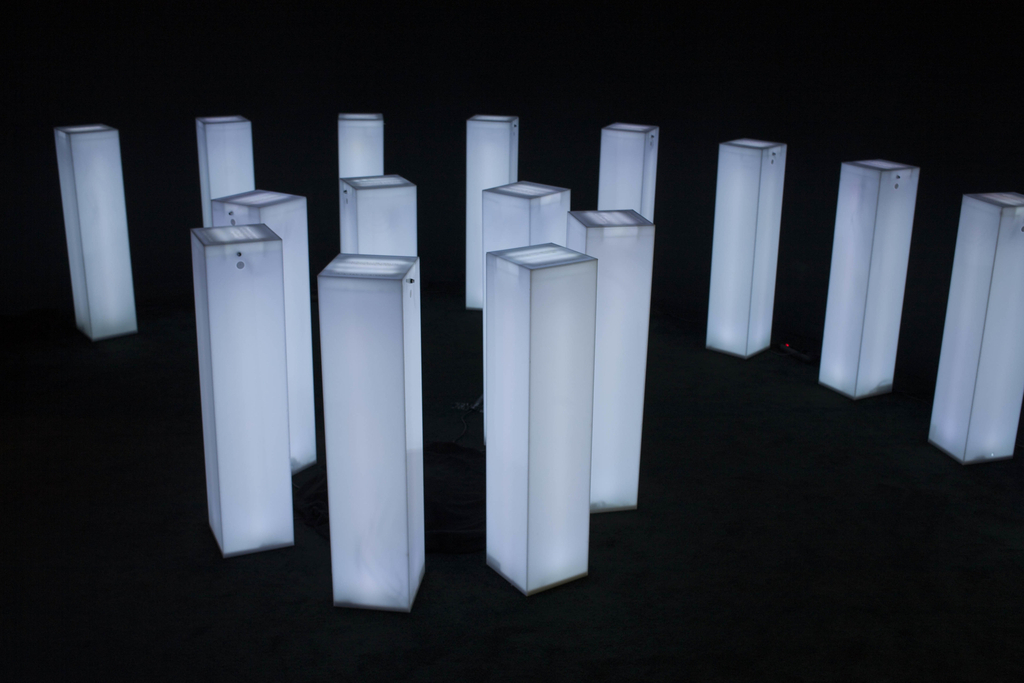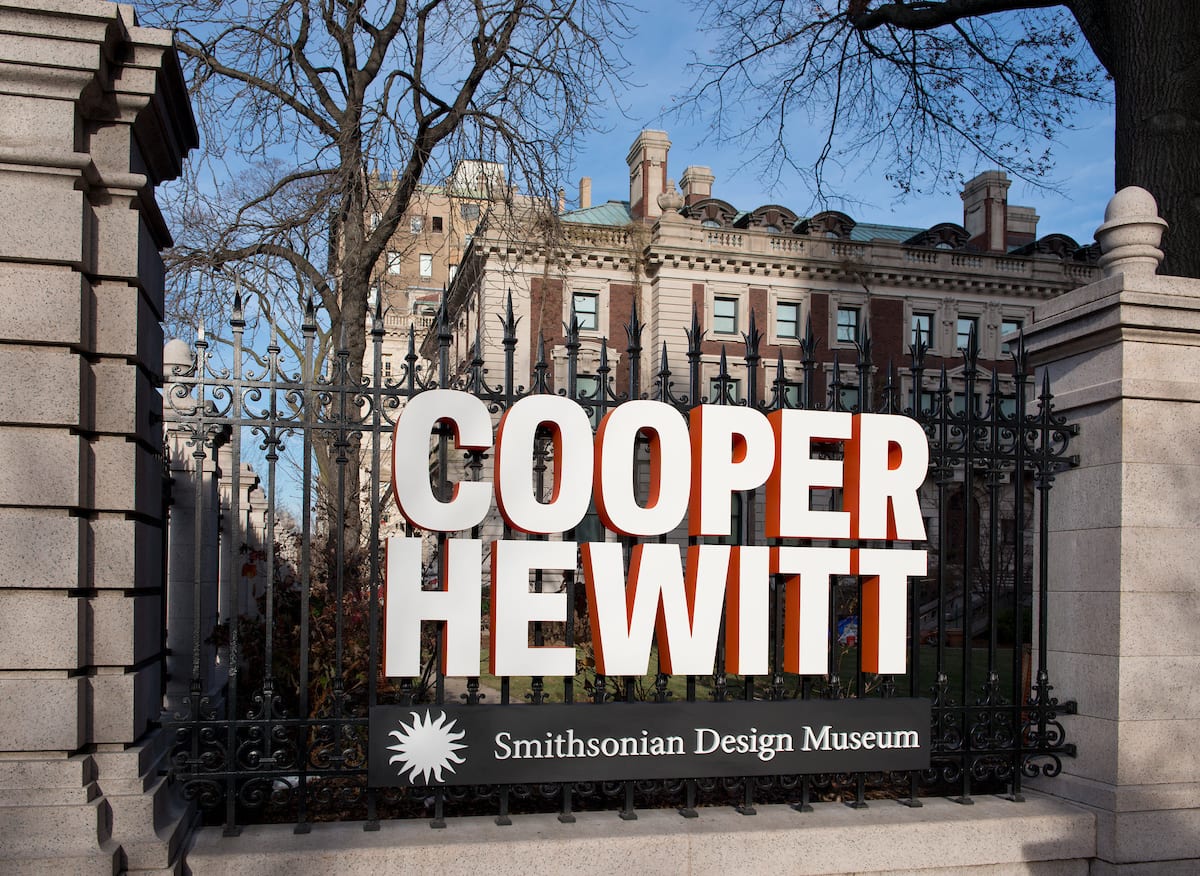Prompt:
Write a 500 word response to your visit to Cooper Hewitt in your blog answering the following questions. Include the photos you took; for the captions, please use proper citations (referring to the works by their proper title, the designer, the date, and medium). Use a 3rd person perspective.
Within the current day and age, sight is the most frequently used sense human beings have and use. Because of this, most of the surrounding world is shaped in such a way that caters to sight and the many ways in which the human gaze can be held. When analyzing an exhibition that is intended to cater to senses beyond the human eye, one must consider the pre-existing difficulties in doing so. Not only are designers within the current times subconsciously plagued with the automatic desire to cater to the the sense of sight, but also, the difficulty in creating pieces that resonate with audiences beyond what can be seen.
Pieces such as “Dialect for a New Era” and the “Feather Fountain” are two design pieces that reframe the notion of disability in new ways. “Dialect for a New Era” is a piece that seeks to attach various smells with common experiences and feelings undergone by most people. On six white, tall pillars laser cut phrases describe various complex emotional states. On the side of each pillar, a white button can be found that releases a smell representative of emotions or phrases described. This piece reframes the notion that disability design must be extremely elaborate because of the simplicity and relatability of both its physical design and intended interaction. The plain, white appearance of the pillars diminishes the ability to absorb color as a key component in experiencing the piece in totality whereas the low complexity of each component makes it easy to understand by the masses. On the other hand lies the “Feather Fountain”. In this piece, dozens of feathers rise and fall within a dome shaped bowl seven feet high into the air all whilst being beamed with a warm surrounding light. This piece tackles the notion of disability design by shifting the focus from one that seeks to focus on the stimulation of an isolated sensory ability and instead to an all consuming sensory experience. If close enough, one is able to hear the wind passing through the feathers, feel the pressure of the wind that is motivating the feather’s movement, see the frequent change of feather location motivated by the wind, taste the cool and brisk air within the space, and smell the almost plastic scent the feathers give off while in motion. Despite their apparent differences, both pieces do a good job in demonstrating the way in which design can be well executed even when sight is not the primary target of stimulation.
The exhibition frames the role and responsibility of a designer to not only be conscious of creating pieces that can be experienced on a universal level but also, redefines the intention for design. As a designer, I believe trying to design pieces that can be used by all people places a limitation on the creation of niche specific objects. Although catering to the needs of the masses is something that should be taken into consideration, doing this at times may be counterproductive. This is because often time, the design will not be seen by “all people”. Design made for critical assessment should not be expected to cater to those on a universal scale. Instead, design intended for day to day use by the general public should uphold such diversity amongst users.
I was the most surprised by the the vast amount of sensory explorations that were covered, how in depth they each were, and the various pieces made for each section of the exhibit. The array of pieces and design studies present created a space in which one’s initial reaction may be to critique rather than experience and casually interact with each piece.
Photos of pieces mentioned:

“Feather Fountain, 2008”

“Dialect for a New Era”
